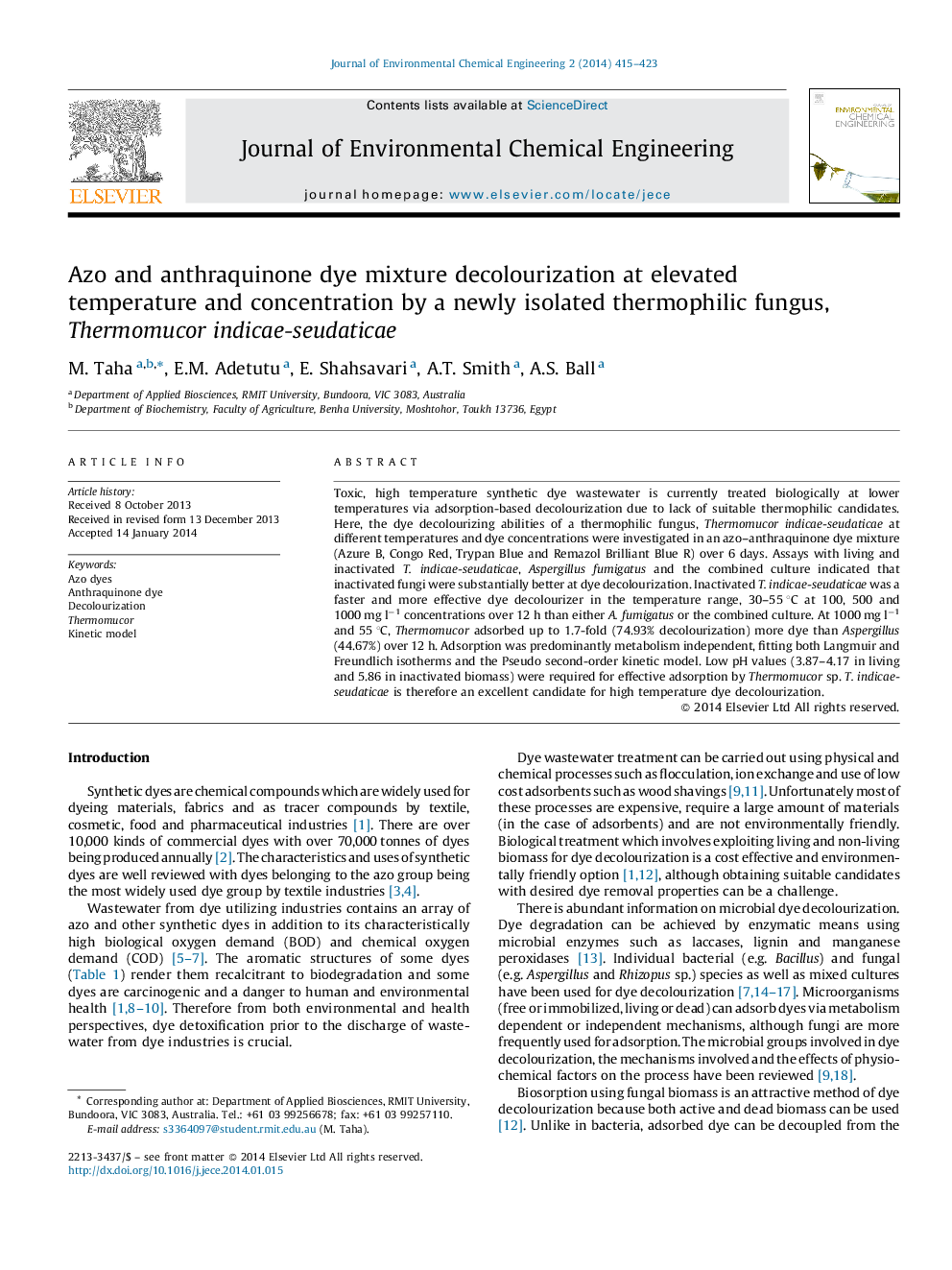| کد مقاله | کد نشریه | سال انتشار | مقاله انگلیسی | نسخه تمام متن |
|---|---|---|---|---|
| 222156 | 464270 | 2014 | 9 صفحه PDF | دانلود رایگان |

• We isolated a thermophilic fungus Thermomucor indicae-seudaticae from compost.
• Fungus successfully used for azo–anthraquinone dye decolourization at 55 °C.
• Fungus successfully used for decolourizing dye concentrations up to 1000 mg l−1.
• Excellent active and passive azo dye mixture adsorption between pH 3.87 and 6.
• First report of thermophilic fungus use for dye adsorption at high concentrations.
Toxic, high temperature synthetic dye wastewater is currently treated biologically at lower temperatures via adsorption-based decolourization due to lack of suitable thermophilic candidates. Here, the dye decolourizing abilities of a thermophilic fungus, Thermomucor indicae-seudaticae at different temperatures and dye concentrations were investigated in an azo–anthraquinone dye mixture (Azure B, Congo Red, Trypan Blue and Remazol Brilliant Blue R) over 6 days. Assays with living and inactivated T. indicae-seudaticae, Aspergillus fumigatus and the combined culture indicated that inactivated fungi were substantially better at dye decolourization. Inactivated T. indicae-seudaticae was a faster and more effective dye decolourizer in the temperature range, 30–55 °C at 100, 500 and 1000 mg l−1 concentrations over 12 h than either A. fumigatus or the combined culture. At 1000 mg l−1 and 55 °C, Thermomucor adsorbed up to 1.7-fold (74.93% decolourization) more dye than Aspergillus (44.67%) over 12 h. Adsorption was predominantly metabolism independent, fitting both Langmuir and Freundlich isotherms and the Pseudo second-order kinetic model. Low pH values (3.87–4.17 in living and 5.86 in inactivated biomass) were required for effective adsorption by Thermomucor sp. T. indicae-seudaticae is therefore an excellent candidate for high temperature dye decolourization.
Journal: Journal of Environmental Chemical Engineering - Volume 2, Issue 1, March 2014, Pages 415–423